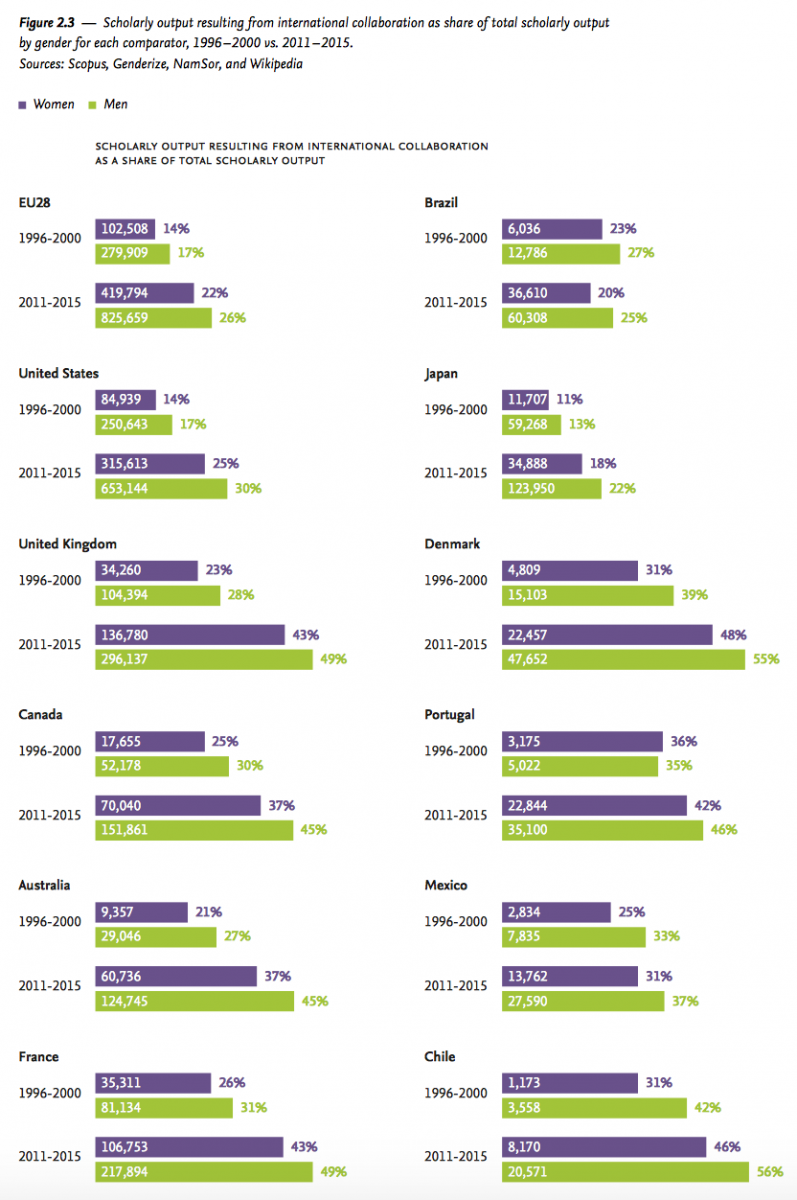ISTOCK
New analysis looks at differences in scholarly outputs and impacts across 12 countries/regions and 27 fields.
A large-scale analysis of gender disparities in research output and impact finds that while the number of women researchers has increased over the past 20 years, women researchers publish fewer papers on average than men and are less likely to collaborate internationally and to undertake research that cuts across the corporate and academic sectors. At the same time, a report on the findings notes there is little difference between papers published by men and women in impact as measured by citations and downloads.
The report, "Gender in the Global Research Landscape," is based on an analysis of Elsevier’s Scopus database, which includes abstract and citation data for more than 21,500 academic journals, book series and conference proceedings across the major research fields, as well as data on names of patent applicants maintained by the World Intellectual Property Organization. The main findings of the report, which examines research performance by gender across 12 countries or regions, over 20 years and in 27 fields, include:
.png) Data from Elsevier’s "Gender in the Global Research Landscape."
Data from Elsevier’s "Gender in the Global Research Landscape."- The proportion of women researchers has increased in all 12 countries/regions analyzed (see chart at left). In nine of the 12 countries/regions examined -- Australia, Brazil, Canada, Denmark, the European Union, France, Portugal, the United Kingdom, and the United States -- women made up at least 40 percent of researchers in 2011-15. Two of the other 12 countries, Chile and Mexico, were close behind, at 38 percent female representation among researchers. This represents a marked improvement in gender balance since 1996-2000, when only one of the dozen countries/regions -- Portugal -- exceeded the 40 percent mark. Portugal and Brazil had the largest proportions of women researchers in 2011-15, at 49 percent, while Japan had the lowest, at 20 percent.
- Representation of women among researchers differs greatly across fields, with the share of women researchers highest in the health and life sciences.Women represent at least 40 percent of researchers across the majority of countries/regions examined in the fields of biochemistry, genetics and molecular biology, immunology and microbiology, nursing, and psychology (in nursing, women make up more than 60 percent of researchers in Australia, Brazil, Canada, Portugal, and the U.S.). In every country or region studied except Japan, women make up at least 30 percent of researchers in the fields of agricultural and biological sciences, neuroscience, pharmacology, toxicology and pharmaceutics, social sciences, and veterinary sciences. However, in the physical sciences -- the fields of computer science, energy, engineering, mathematics, and physics and astronomy -- women make up fewer than a quarter of researchers in the majority of the countries/regions examined.
- Women have lower scholarly output than men on average but perform similarly on research impact measures. In 11 of the 12 countries/regions -- everywhere except Japan -- men published more papers on average over a five-year period than women. However, the report states, “This imbalance in scholarly output is not mirrored in the downloads or citations that those papers receive. While differences in field-weighted download impact and field-weighted citation impact between women and men are small, the former indicator slightly favors women, while the latter slightly favors men.”
- The number of women inventors is rising but remains proportionally low. The share of women named as inventors in patent applications filed worldwide under the Patent Cooperation Treaty increased from 10 percent in 1996-2000 to 14 percent in 2011-15. The percentage of patent applications listing at least one woman among inventors increased from 19 percent to 28 percent in that time.
- Women collaborate less than men internationally across all 12 regions/countries (see chart below). Women researchers are also less likely than men to be internationally mobile. "We can hypothesize that the findings around international collaboration and mobility are linked: if women are less internationally mobile, it may also restrict their network and international collaboration opportunities. If international collaboration occurs less frequently for women than men, their networks may remain small and this may negatively affect opportunities for career progression and mobility," the report states.
- Women are slightly less likely than men to engage in cross-sector research involving academe and industry. The analysis found relatively little difference across countries and regions in this regard.
 Data from Elsevier’s "Gender in the Global Research Landscape."
Data from Elsevier’s "Gender in the Global Research Landscape."
The analysis also examined gender-related research and found that field is growing quickly -- faster than the overall growth rate for all scholarly research.
Holly Falk-Krzesinski, vice president for global academic relations at Elsevier and a member of the project team that produced the report, described it as "an important evidence-based examination of research performance through a gender lens, in so much as the scope of disciplinary breadth using our Scopus database is much larger than in any previously reported study."
Falk-Krzesinski underscored the importance of relying on data for policy discussions and decisions. "We found differences between different comparators, the different regions we examined, and between disciplines," she said.
"What was most prominent to us is the differences between the comparators," she continued. "We saw big spreads. For example, in Brazil and Portugal the proportion of women to men is almost at 50 percent … and [it] remains much lower in terms of proportion for Japan."
March 8, 2017, Inside Higher Education


Nenhum comentário:
Postar um comentário